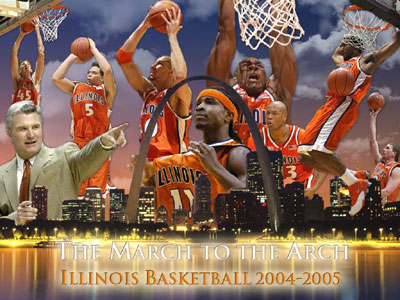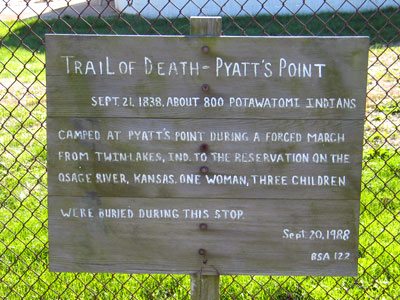Marching to the Arch on the Trail of Death
"Landscapes can often hold together a past and present, a present and a future, or all three together. They are often understood as repositories of the past, holding history in their contours and textures. WG Hoskins likened landscapes to palimpsests, traces upon layers of lines and marks, each left at a particular moment and still resonant, awaiting decoding. Indeed, looking at landscapes as evidence of past processes and events seems a strong temptation, much stronger than seeing landscapes as offering possibilities for the future. But the meanings of landscape, whether historical or for the future, are never simply there, inherent and voluble. Instead, they are made to speak, invited to show themselves, and that invitation is the process of practising landscape which always places landscape in a present moment. This presentation is a crucial one and a political one, for it disrupts accounts of landscape which seek to ground certain claims and identities in a self-evident earth. Landscapes are always perceived in a particular way at a particular time. They are mobilised, and in that mobilisation may become productive: productive in relation to a past or to a future, but that relation is always drawn with regard to a present."
Deterritorialisations... Revisioning Landscapes and Politics (2003)
Mark Dorrian and Gillian Rose


"Marching to the Arch on the Trail of Death" is a spatial story about land and property, measurement and orientation, roads and trails, Indians and Whites, basketball and religion, remembering and forgetting, symbolism and ideology.
The story takes the form of a multi-media presentation and an online archive that documents the ongoing search for traces of the past and possibilities for the future in the present landscape of east central Illinois - all the while revealing the persistence and projection of rhetoric, symbols, and attitudes associated with Westward Expansion, Manifest Destiny and Indian Removal. Following W.J.T. Mitchell's suggestion, this story attempts to create an account of the Illinois landscape that "traces the process by which landscape effaces its own readability and naturalizes itself."
Comparisons are drawn between seemingly disparate subjects as a means of probing the symbolic and material implications of "facing east" and "facing west." The story excavates the related history of European settlement and Indian Removal in the Midwest - the intertwined politics of possession and dispossession - in order to expose the lingering presence of various ideologies used to justify these historic events.
"Marching to the Arch" presents a racialized landscape that confounds efforts to simply remember and/or forget, revealing how these histories and identities are subtly encountered and (re)produced in the everyday. From contemporary Indian land claims, to Fighting Illini basketball and foreign policy debates, these historical fragments retain surprising currency whether they circulate discursively or are preserved materially in the built environment. It is important to consider how this process of (re)production and (re)interpretation informs our present outlook and commitments and to better understand how this landscape is mobilized and made productive.
"Marching to the Arch" refers to the 2005 NCAA men's basketball tournament, which culminated in St. Louis, Missouri. The "Trail of Death" refers to the forced removal of a group of Potawatomi Indians from Indiana to Kansas in 1838. Largely forgotten and easily overlooked, the Trail of Death passes through Champaign County about 15 miles south of the University of Illinois and its simmering controversy over Chief Illiniwek.
... this website is still under contruction ...